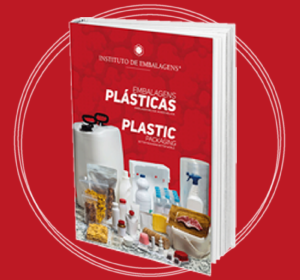ABOUT THE PLASTIC PACKAGING BOOK
Following the path of the previous publications of the Better Packaging. Better World collection, we aim, with this new book, to shed light on plastic packaging, covering the entire chain, from conception to final disposal. All of the authors dedicated their time to explain the latest developments in this area while Instituto de Embalagens’ content curation team was attentive to coherently organize the information.
Plastic packaging is undergoing a moment of truth: environmental non-governmental organizations (NGOs) and the media condemn the material. Instead of only looking at the surface, everyone should encourage education. Plastic must not end up in the sewer, rivers, and the sea, and neither be disposed of in landfills or other places. It is necessary to explain the benefits of plastic, show the applications, its unique attributes, the relation of the material’s weight versus what it can preserve, and the improvement of the shelf life of several products.
We understand that we must raise awareness among the population and packaging developers, professionals that make choices about packaging in different companies. They must understand the possibilities and applications of plastic packaging. This book provides information that guides the decision-making process and allows the plastic to reach its full potential.
Plastic is present in more than 60% of the packaging produced, contributing with unique attributes such as flexibility, durability, barriers, material weight ratio versus the amount of protected product, and numerous applications. Plastics also make products accessible to much more people.
We need to have an unbiased and impartial bibliography and a speech to guide the durable goods, consumer, and plastic transformation industries. Such references can respond to the attacks and provide clarifications: plastic is sustainable and useful to society.
The coauthors understood the challenge and sought updated information to reach the expected result. We aimed to explain the benefits of plastic packaging and how we should work to use them without compromising future generations.
Better Plastics Packaging. Better World!
Assunta Napolitano Camilo
Director of the Instituto de Embalagens
PREFACE
The world’s population is expected to grow by more than 2.2 billion people by 2050, especially in urban areas, according to the United Nations. In the midst of the changes that
will occur in this new context, we will need to continue to feed our entire population on a daily basis.
Food waste is responsible for one-third of the world’s greenhouse gas emissions, according to the World Wildlife Fund (WWF). Plastic packaging is an important solution to
combat this waste as it better preserves food and promotes its quality and safety, from the producer to the final consumer.
Types of packaging – either for foods and beverages or for hygiene items and cleaning products, for example – have emerged to offer the population greater access to products, increase the shelf life of these items, facilitate transport logistics, and reduce waste. In this scenario, plastic materials have a better cost-benefit, enabling the development
of more accessible products.
Plastic packaging also contributes to the reduction of urban waste. Currently, metropolitan areas in Latin America and the Caribbean produce 541,000 tons of waste each day, according to the International Solid Waste Association (Iswa). That number would be much higher if we did not count on the benefits of plastic, which significantly reduces the volume and weight of packaging and, as a consequence, the need to transport waste.
The plastic industry is moving toward sustainability and the promotion of the circular economy. It has improved the design of packaging, finding solutions and setting standards so products have higher recycling rates. The industry is also developing packaging that uses less raw material, being smaller, more efficient, and intelligent, ensuring greater durability for the product.
The 18th book of the “Better Packaging. Better World” collection discusses the universe of plastic packaging, covering all steps, from concept to final destination. With this publication, Instituto de Embalagens, a partner of Abiplast, provides a great service to society by shedding light on the importance of this type of packaging to the modern world and to future generations.
I wish you all a good and enlightening reading.
José Ricardo Roriz Coelho
President of the Brazilian Association of the Plastic Industry (Abiplast)
PREFACE
The plastic packaging industry is facing some of its biggest challenges in recent times, as a perfect storm of environmental groups, governments, consumers, and the mainstream media has rained down on the sector with vengeance.
Despite copious examples of incendiary journalism and debatable scientific studies, companies across the packaging value chain have been working hard to debunk myths and promote the virtues of plastics. Brands, retailers, and even converters have responded by making bold commitments – often with a target of 2025 – for recycling, reusability and/or compostability.
There are several megatrends that define the current landscape in the near US$ 1 trillion global packaging market: the growth of e-commerce channels; rapidly changing consumer and customer preferences; margin compression of CPG companies and retailers; increasing pressure on sustainability; and digitalization of packaging.
While some of those have already been addressed by the industry, what makes them major trends is their current intensity. As approved laws related to plastics use multiply around the world, and consumers show greater interest in the environment – often to the detriment of plastics – it has been a time of reflection and action for the plastic packaging industry, and perhaps a perfect time for it to get its house in order and re-stake its claim.
The quest for circularity is taking the center stage and major progress has been made in the recycling industry across Europe and North America especially, with a need to promote the value of used plastics seen as pivotal to the sustainability cause. And alongside the increased use of recycled content has been a concerted effort to make flexible plastic packaging more recyclable, and as mono-material-based as possible.
Plastics are incredible materials and have served to improve all of our lives for decades, whether through increased product shelf life, reduced food waste, or more ergonomic and functional solutions. Going forward, we will see more light-weighting, new materials, improved recyclability, smarter packaging, and greater use of automation in the industry.
Targets for the plastic packaging industry include reuse, recycle, and redesign (or innovation). To achieve these objectives, it has never been more important for companies across the value chain to collaborate. But they also need to promote the benefits of plastics better, because only then can industry start to turn the tide and convince the skeptics.
Plastics are truly remarkable materials that have benefitted every single one of us. They remain the best choice for a raft of packaging applications when full lifecycle analyses are conducted, and these are the kinds of messages that the industry needs to be shouting a little louder about.
Steven Pacitti, editor of Plastics in Packaging magazine (plasticsinpackaging.com) and president of the International Packaging Press Organisation (IPPO)


